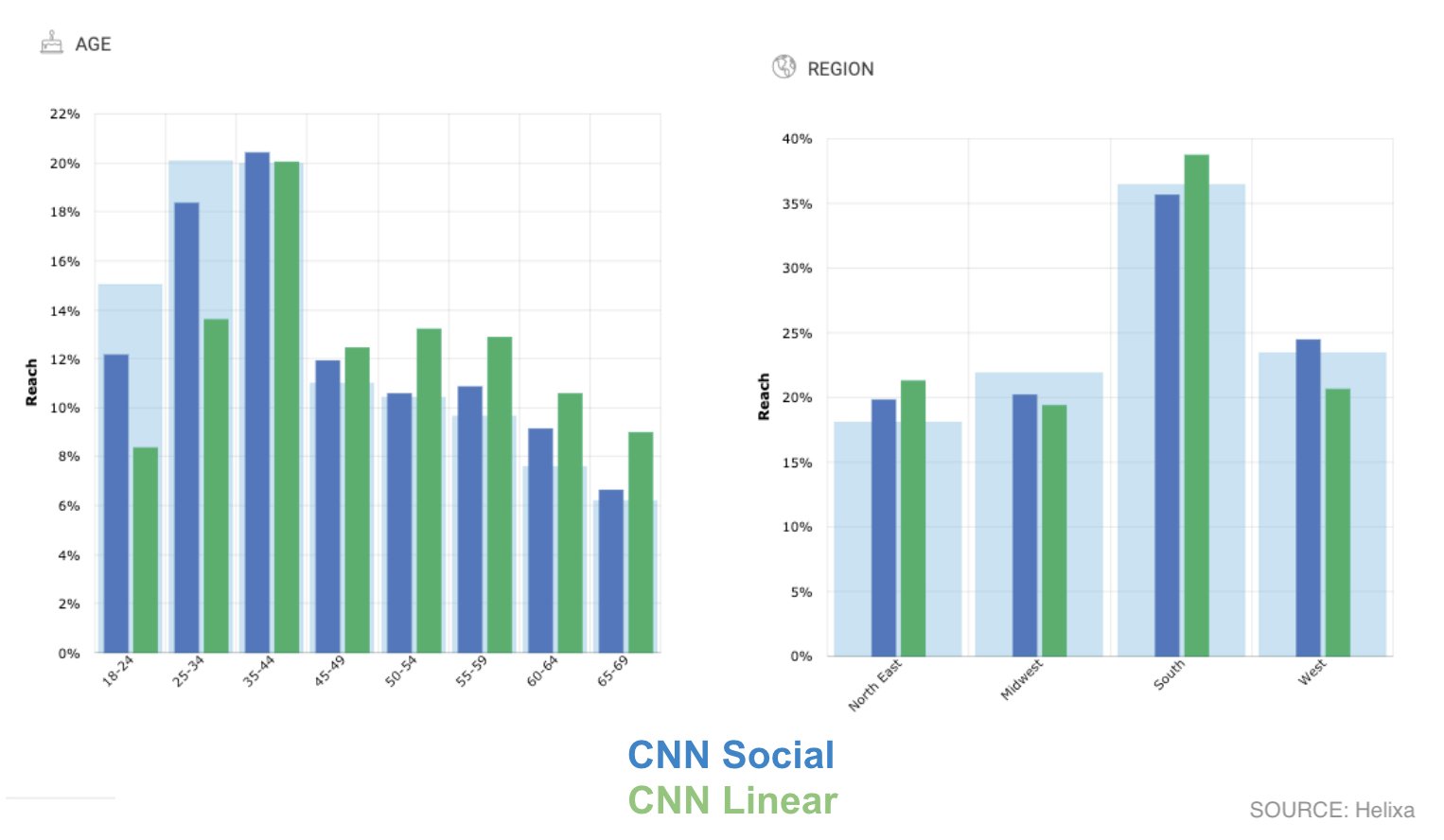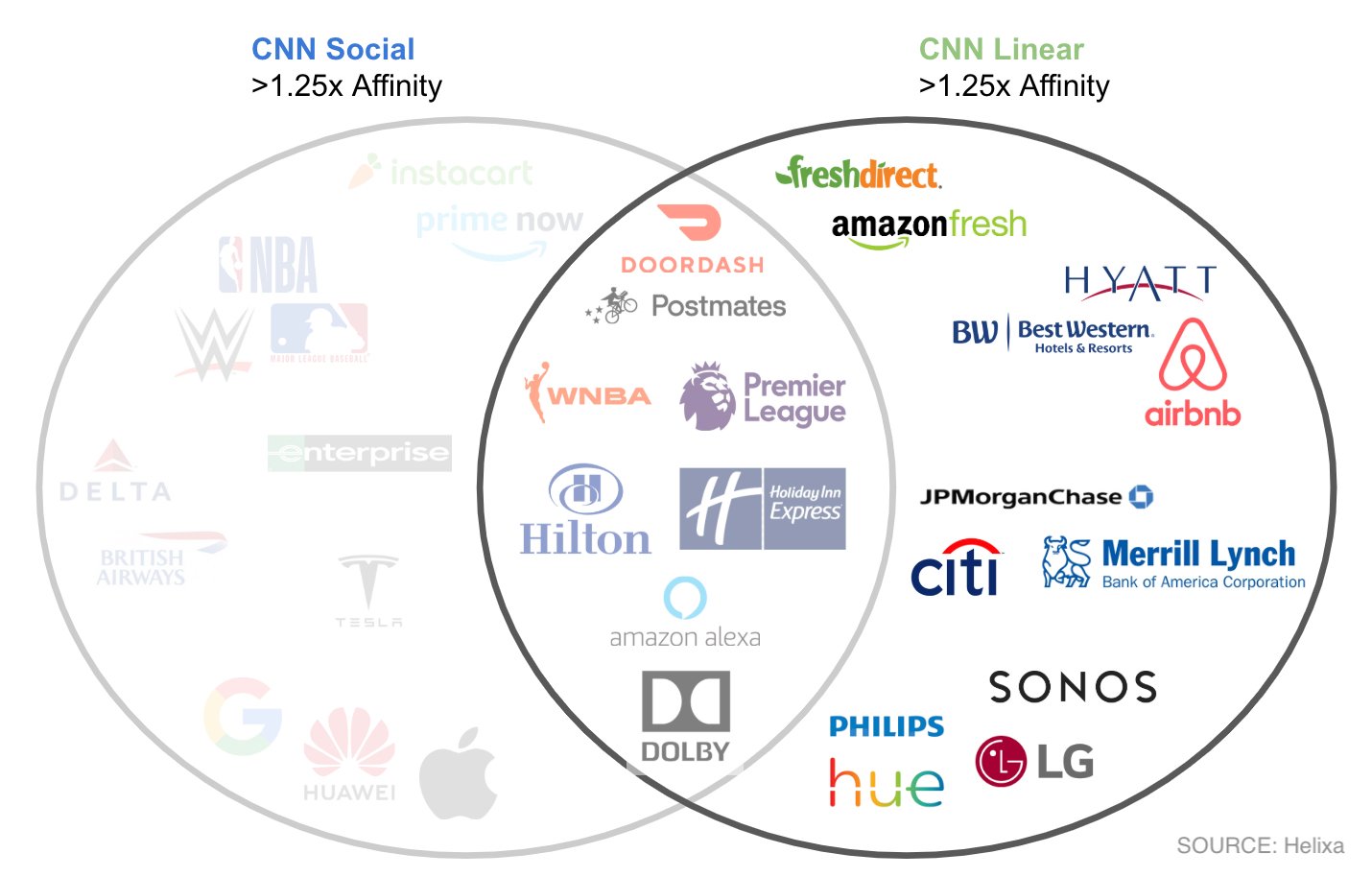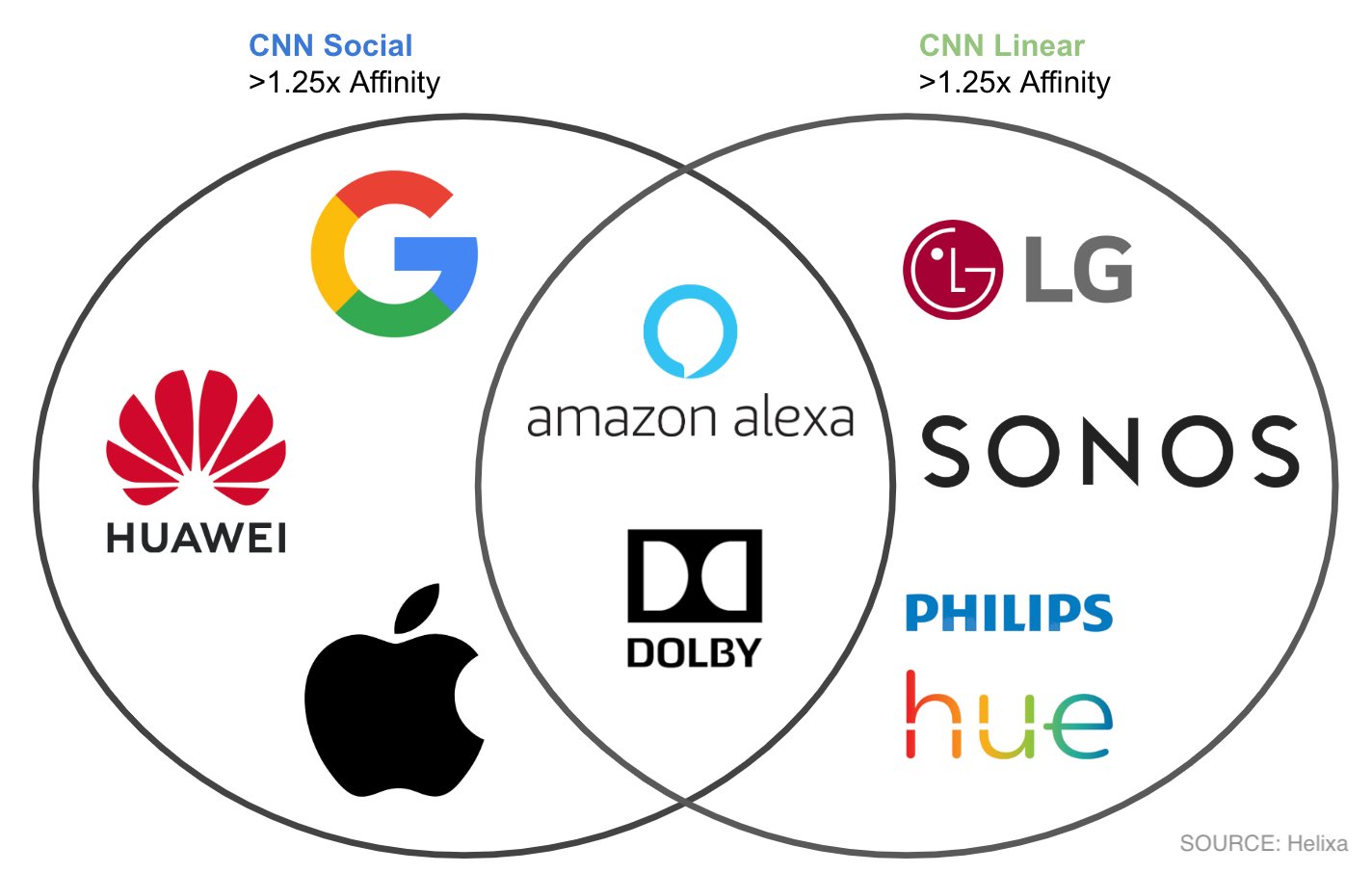Having additional platforms at your disposal is valuable when offering your audience up to advertisers, but it can be tough to plan integrated advertising campaigns when you aren’t sure how your audience differs between channels.
Linear TV is already complicated when you consider that within a single television network, viewers can differ greatly between programs and dayparts, and digital properties only add complexity to the decisions you are faced with.
To leverage your hard-won relationships across all of your channels for truly integrated advertising campaigns, you need to understand these nuances. We took a look at CNN’s social and linear audiences to demonstrate the differences between them and the potential impact of those insights on an integrated advertising strategy.
One network, multiple audiences
It might be tempting to assume that the CNN target audience on linear TV and social media are one and the same, but it turns out less than half of each audience overlaps with the other in terms of interests and personality.
For the 40 percent that overlap, social channels can be a strategic way to increase the frequency of ad exposure. On the other hand, the social-only audience can be used to extend the TV audience and create new opportunities for integrated advertising.
The key is having as much insight as possible on both audiences to make more informed decisions. By fusing social audience data with linear TV audience data from national studies by traditional research titans, like MRI-Simmons, our platform gave us a more complete picture.
It probably won’t surprise you to learn that CNN’s social audience skews younger than the linear audience, but CNN’s older segments are on social media more than average.
There are also some regional differences: Both audiences over-index in the Northeast, but the social audience is more represented in the West. So, purchasing social campaigns could help advertisers extend beyond the Northeast.

Expanding the scope to integrated advertising
Using a fusion of Helixa and MRI data, we took a look beyond demographics to understand how each audience engages with specific brands and products. This allows us to narrow down the products that resonate with both audiences for integrated advertising efforts.
Looking at only the linear audience, we can see that banks, hotels, food delivery services, and consumer electronics would probably have a strong showing if they advertised during CNN’s commercial breaks. However, you need to know more to put together a successful multichannel strategy.

Bringing in the social audience presents some really interesting insights that enrich the previous linear TV data. Not only do new opportunities emerge with the social audience, like Marvel and several airlines, but some of the linear TV opportunities are also strengthened by the shared interest of both groups, which can be a real game-changer if you want to create a surround sound effect with your integrated advertising efforts.
It’s important to note that different brands may be preferred by each audience, even if their shared category is represented across the entire multichannel audience.
For example, consumer electronics are represented in every area of this venn diagram, but some brands are preferred by the social audience, like Apple and Google devices. They may choose to advertise where they have an existing advantage, or they may choose to build their market share further. The important thing is that they are making informed data-driven decisions.

Alexa, play “Eye of the Tiger”
A high affinity for Alexa is shared by both the social and linear audiences, so it’s a good candidate for an integrated advertising campaign. Let’s dive into the details for some insights that might help elevate an integrated advertising campaign.
The demographics of both audiences match up fairly closely, but it’s important to note that Alexa’s audience is older, on average, than CNN’s.
When we looked at the top lifestyles of people who engage with both Alexa and CNN, you see home chefs, thoughtful eaters and money savers all in the top 10. Campaign creative could demonstrate the cooking skills that Alexa can learn to help you in the kitchen.

You can drill the Alexa audience down further to understand what programming would resonate best with them. Specifically, we looked to see which influencers have the most sway and found that Alexa’s audience has a high affinity for Jim Sciutto, so CNN Newsroom is probably a good bet.
At the end of the day, there are a lot of complex decisions to make. Helixa can’t make those decisions for you, but we can provide the data you need to make smarter decisions faster.
Learn how Helixa can work for you – contact us to learn more.




